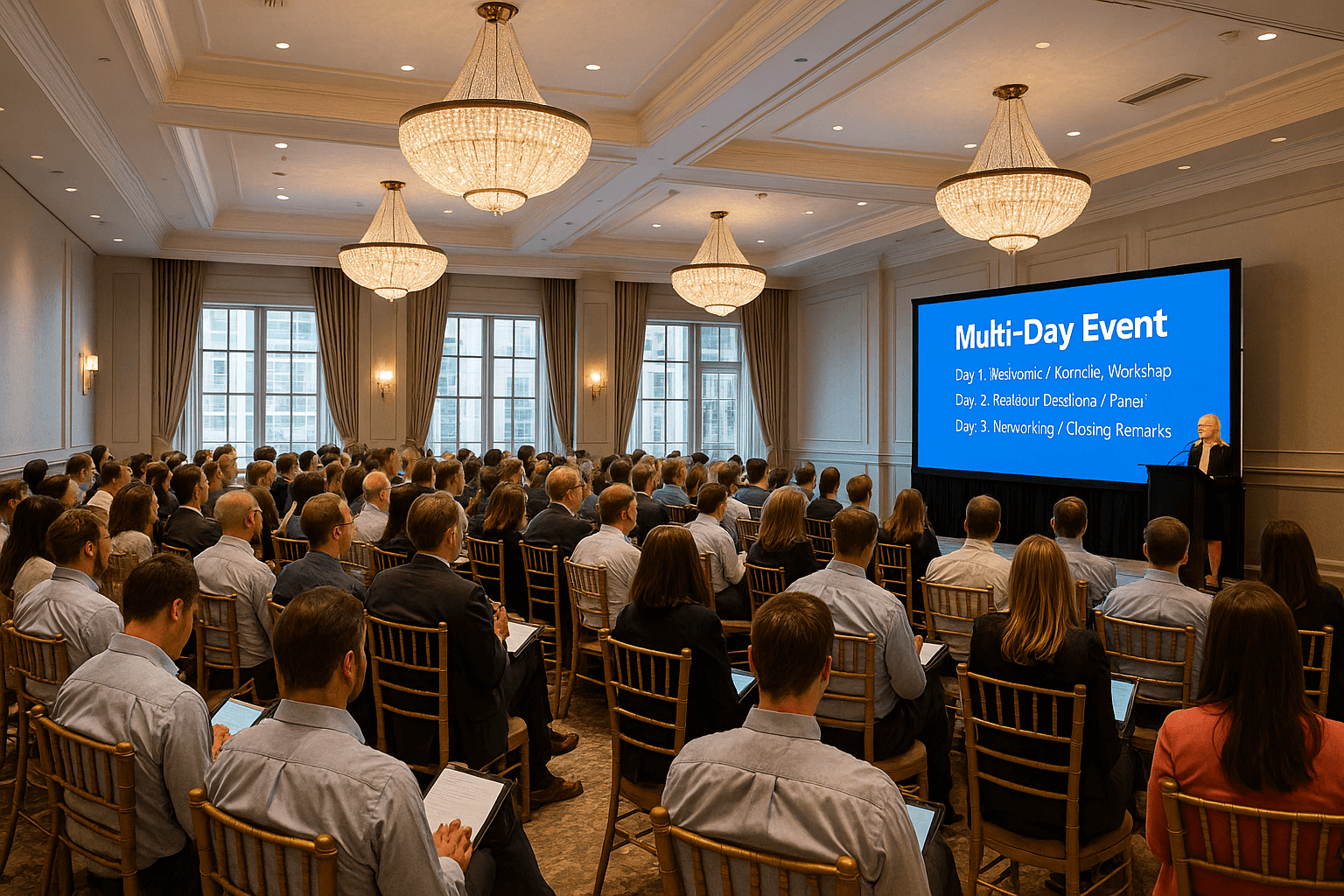Planning a multi-day event, such as a retreat, festival, or conference, comes with added complexity and expectations. While a single-day event can get away with a tight agenda and limited logistics, multi-day experiences demand greater organization, consistency, and creativity to keep attendees engaged and satisfied across multiple sessions and environments.
In this article, we’ll explore practical strategies for organizing a seamless multi-day event that flows naturally and leaves a lasting impression.
Establish Clear Goals and Structure Early On
Every successful event starts with a well-defined purpose. For multi-day formats, it’s crucial to determine:
- The overall objective (education, networking, celebration, etc.)
- Key themes for each day
- Ideal number of sessions or activities per day
- Desired emotional progression from start to finish
Once goals are clear, you can build a structure that helps participants navigate the experience easily. For instance, you might use Day 1 for introductions and icebreakers, Day 2 for deeper content or workshops, and Day 3 for celebration or reflection.
Design a Detailed Multi-Day Agenda
The agenda is the backbone of the event experience. It needs to balance structure with flexibility, offering enough time for breaks, social interaction, and transitions between locations or sessions.
Tips for crafting the schedule:
- Begin each day with a brief overview or welcome moment
- Mix formats to maintain interest (talks, panels, group activities, entertainment)
- Limit session lengths to avoid fatigue
- Add buffer time between events to reduce stress
- Include optional activities for different energy levels
Publish the full agenda well in advance and distribute printed and digital versions.
Choose a Suitable Venue for Extended Stays
The venue plays a huge role in attendee comfort during multi-day events. Consider:
- On-site accommodations or nearby lodging options
- Dining facilities or catering services
- Reliable Wi-Fi and charging stations
- Comfortable common areas for networking
- Multiple room sizes for varying session types
Accessibility and transportation should also be top priorities. Providing shuttle services or walkable access between locations helps reduce logistical friction.
Maintain Consistent Branding and Messaging
To reinforce your event’s identity, maintain consistent visuals and tone throughout all days.
This includes:
- Branded signage and materials
- Consistent color schemes and fonts
- Aligned tone in announcements and speaker intros
- Clear communication through emails, apps, or text alerts
You might also give each day a branded theme to add structure and anticipation—like “Innovation Day,” “Collaboration Day,” and “Vision Day.”
Offer Diverse Food and Beverage Options
Food can significantly affect energy and satisfaction levels. Over multiple days, guests will appreciate variety and options for different dietary needs.
Consider:
- Rotating menus with fresh themes each day
- Clearly labeled items for allergies or restrictions
- Snack and hydration stations accessible all day
- Coffee and tea areas for casual interactions
If the budget allows, including a “special dinner” or tasting night adds memorability.
Create Opportunities for Networking and Downtime
Attendees of multi-day events often value informal connection as much as the content itself. Provide multiple avenues for them to interact without overwhelming them.
Ideas include:
- Scheduled mixers or cocktail hours
- Casual lounges with music and refreshments
- Group activities like morning yoga or evening walks
- Interactive installations or shared creative spaces
Also, schedule unstructured blocks of time so guests can rest, explore, or follow their own interests.
Handle Logistics with Precision and Backup Plans
Multi-day events involve more moving parts, which means more potential for errors. Anticipate needs and have plans in place for common problems.
Prepare:
- A central hub for help or information
- On-call tech support for AV and Wi-Fi
- Medical and safety staff or procedures
- Extra supplies (batteries, signage, chargers)
Keep a printed master checklist and a shared digital document that the whole team can access and update in real time.
Use Technology to Simplify the Experience
Digital tools can make a big difference in managing and enhancing a multi-day event.
Helpful options:
- Event apps with schedules, maps, and updates
- Push notifications for last-minute changes
- Digital feedback forms after sessions
- QR codes for check-in or activity access
You can also stream sessions for remote participants or create a digital archive for post-event engagement.
Gather Feedback Throughout the Event
Don’t wait until the end to ask for opinions. Use daily feedback to make small improvements as you go.
Ways to collect feedback:
- Quick pulse surveys each evening
- Suggestion boxes or digital comment forms
- Casual conversations with team members
Small changes based on attendee input—like adjusting session times or refreshing menus—can improve satisfaction significantly.
End with a Thoughtful Conclusion and Follow-Up
Just like a story, your event needs a strong ending. Plan a closing session that helps guests reflect and feel valued.
You might include:
- A group photo or video recap
- Thank-you speeches or awards
- Take-home gifts or resources
- A call to action or next steps for attendees
After the event, send follow-up emails with:
- A thank-you note
- A highlight reel or summary
- Links to presentation materials
- A final survey for comprehensive feedback
Final Thoughts
Hosting a multi-day event is a large undertaking, but with thoughtful planning, clear communication, and a commitment to guest experience, it can deliver enormous value. By structuring each day intentionally, staying flexible, and responding to attendee needs, you’ll craft an immersive and memorable event that stands out for all the right reasons.
